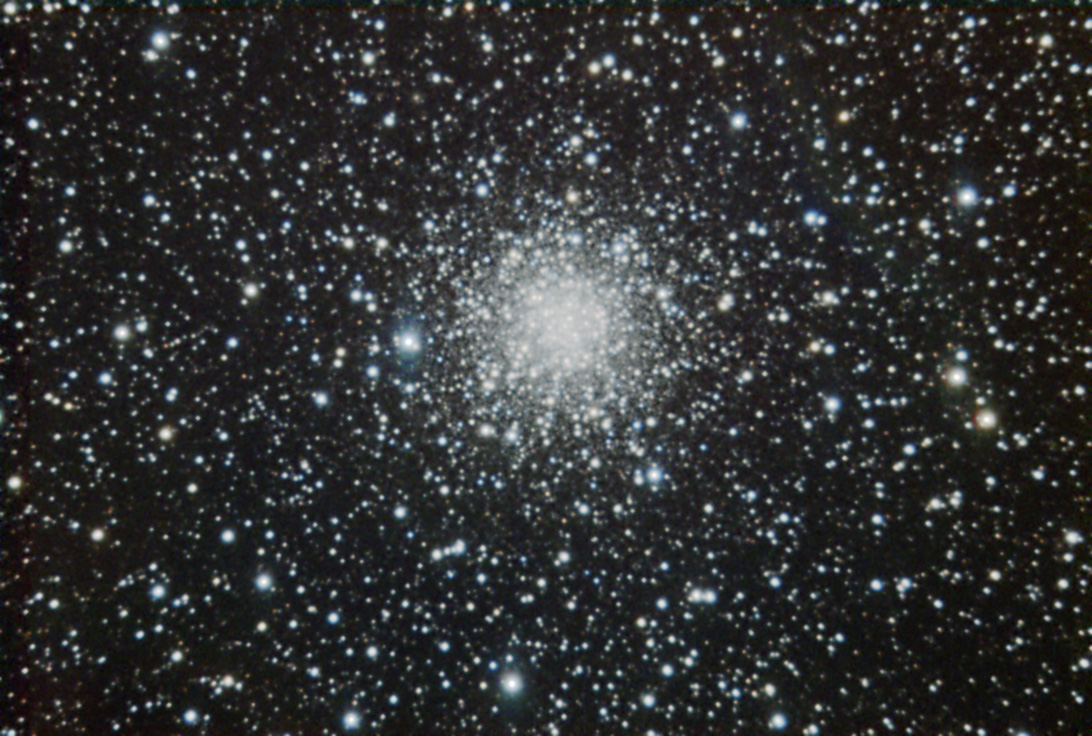M56

M56: This relatively unremarkable globular cluster in the constellation Lyra, is not often imaged. As with all globular clusters, it formed around the same time as the Milky Way galaxy, and comprises very old stars. This cluster is approximately 30,000 light years away.
Messier: 56
NGC: 6779
Other Catalogs: GCI 110
Right Ascension: 19h 16.6m
Declination: 30° 11'
Apparent Magnitude: 8.3
Date: September 2010
Equipment:
Telescope: Meade 16" Schmidt Cassegrain with f6.3 reducer (used at ~ f6.1)
Camera: SBIG ST-10XE
Guiding: AO-8
Exposure: RGB: 4x5 minutes
The camera was at -30°
Processing Notes: Data acquisition with CCDSoft. Reduced and aligned in CCDStack. Subs combined in Sigma Combine. RGB combined in AstroArt at 1:1.02:1.6 ratio. Imported TIFF into Photoshop, adjusted curves and levels, and reduced noise of dimmer areas. Slight minimum filter on brighter stars, and slight unsharp mask overall.
Scale: 1.03"/pixel
Links to images of this object on other sites:
http://en.wikipedia.org/wiki/File:Messier_56_Hubble_WikiSky.jpg
http://www.caelumobservatory.com/gallery/m56.shtml
Additional Comments: This image was taken with RGB filters only - no luminance channel yet.
The name "globular" cluster, coined by William Hershel, is very descriptive of their appearance - a glob of stars. There are fewer than 200 globular clusters known around the Milky Way, and unless you are familiar with specific ones, they all look very similar. These clusters condensed while the Milky Way was still forming, and reside in a spherical halo around the disk. Unlike objects in the disk, which have a mostly orderly rotation about the galactic center, the orbits of globular clusters are random. It was the three dimensional distribution of globular clusters that Harlow Shapely used to find the center of the Milky Way. All large galaxies are observed to have globular clusters in a halo. Globular clusters are ancient. Generally comprising what are called Population II stars (old ones with fewer heavy elements), there are no longer any luminous, blue, main sequence stars, and the remaining distribution of stars is noticeably redder than that found in open clusters in the spiral arms. Lots more information can be found here: http://en.wikipedia.org/wiki/Globular_cluster
Views: 2794
 This work is licensed under a Creative Commons Attribution-NonCommercial-ShareAlike 4.0 International License.
This work is licensed under a Creative Commons Attribution-NonCommercial-ShareAlike 4.0 International License.

